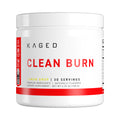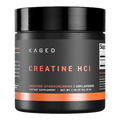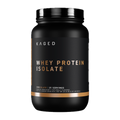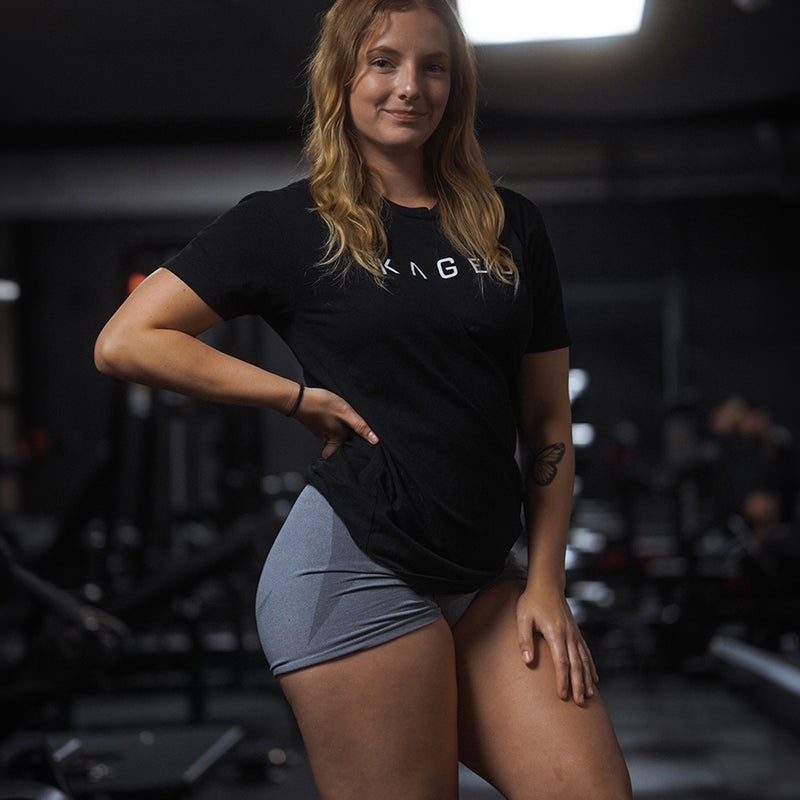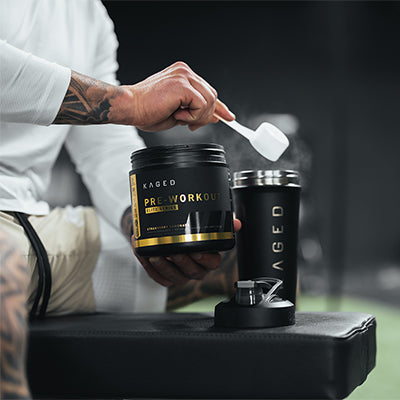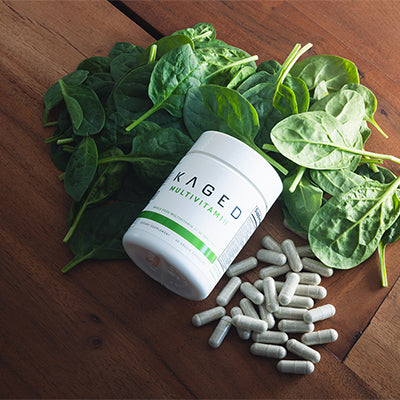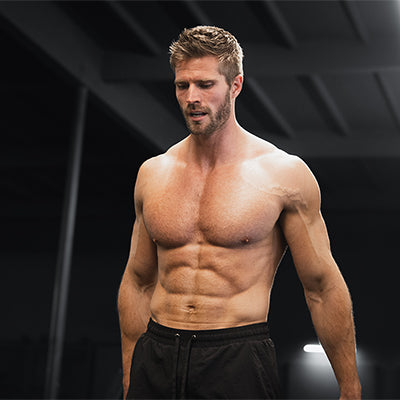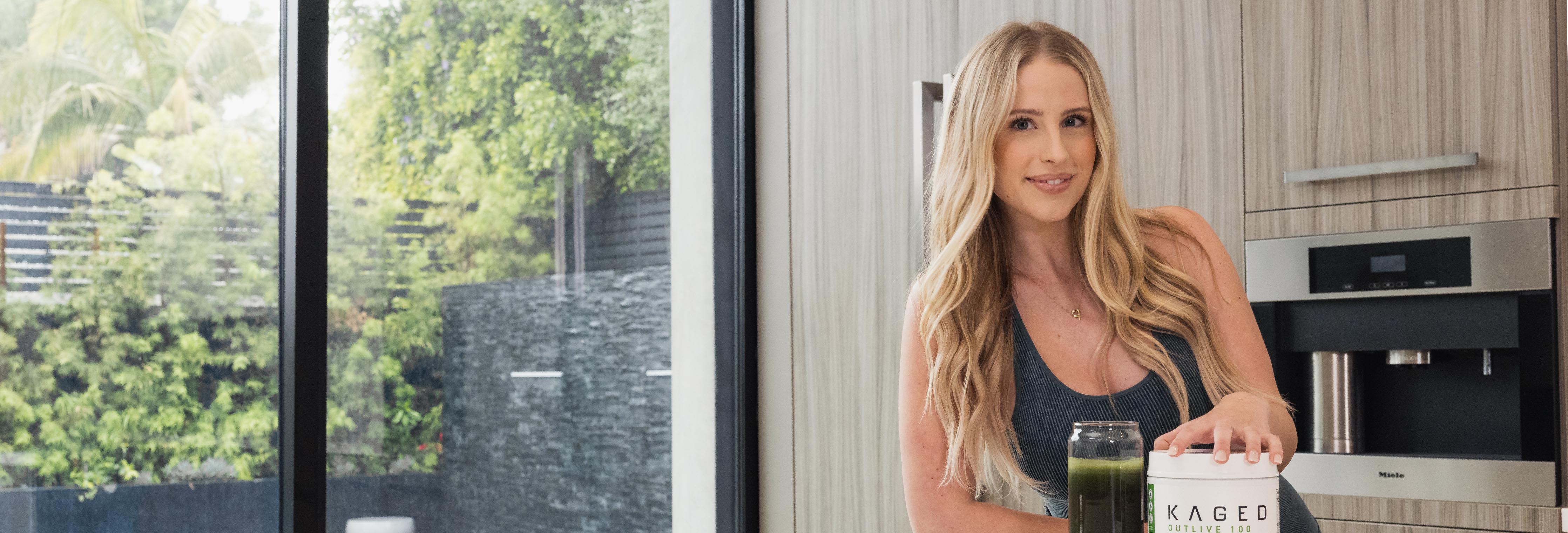We are the fortunate planet in our solar system where life is possible thanks to many factors. One of the key factors is our sweet-spot distance from the sun where it’s neither too hot, nor too cold.
Without the sun, we wouldn’t be here today. We know this thanks to scientific advances, but even ancient cultures, from the Greeks to the Egyptians to the Incas and Aztecs found ways to praise the sun through various sun gods.
Clearly, there’s something fundamentally important about the sun, which humans across time have tried to give language and story to in their own way.
On a smaller scale, we’ve learned more and more about how sunlight exposure is fundamental for everything from optimal alertness and performance, to sleep and immune health.
Many of these health benefits you can get anytime of day, thanks to our body’s ability to produce vitamin D from sun exposure.
However, there are some uniquely suited to the morning time.

Why Is Morning Sunlight so Important? Enter: The Cortisol-Melatonin Cycle
We are “diurnal” creatures. You probably know the term “nocturnal,” which refers to creatures that stay awake in the evening and sleep during the day. Diurnal means the opposite, and describes animals typically awake during the day.
Many of our physiological processes are built around this, including our circadian rhythm.
The Circadian Rhythm: The Inverse Relationship Between Cortisol and Melatonin
You probably also know the terms circadian rhythm or internal clock, but may not fully understand what they refer to.
In order for your body to stay alert during the daytime and asleep at night, key hormones follow a 24-hour cycle.
These hormones can be placed into two buckets: sympathetic hormones and parasympathetic hormones.
Sympathetic hormones keep us alert, awake, and able to perform our best. They’re responsible for “fight or flight” responses.
Parasympathetic hormones help us unwind, sleep, and do things like digest food. They’re responsible for “rest and digest” responses.
When it comes to sleep and wake cycles, the sympathetic hormone cortisol and the parasympathetic hormone melatonin run the show.
In an ideal circadian rhythm, cortisol is high in the morning, and low in the evening. Melatonin is the inverse. It should be high in the evening and lowest in the morning.
Morning Sun Exposure Helps Regulates These Hormones
Without sun exposure, our body can’t effectively regulate these two hormones on the 24-hour cycle.
Getting outside in the morning jumpstarts healthy cortisol production, while simultaneously resetting our melatonin clock.
This, in turn, has an array of benefits.
9 Benefits of Morning Sunlight

1) Increased Alertness
Morning sunlight will increase your cortisol levels, which will subsequently improve your alertness. One 2019 study following healthy adults showed that “increases in cortisol were significantly associated with subsequent rises in activeness, alertness, and relaxation.”
2) More Energy
Similarly, increases in cortisol as a result of morning sun exposure can help increase your subjective feelings of energy.
If you get your sunlight in conjunction with a walk or other movement, then that will also support your energy and alertness.
3) Increased Productivity
While related, increased alertness, energy, and relaxation can also put you in the ideal spot to be more productive and creative.
The hours after morning sun exposure is when your cortisol is typically highest. This is the ideal time to do some of your most demanding work.
To further increase your focus, working memory, and attention, take a scoop of Kaged Mindset.

Shop Kaged Mindest
4) Better Sleep, Improved Sleep Quality
While counterintuitive, the morning time is one of the most important times to set yourself up for a great night’s sleep.
Morning sunlight resets our circadian rhythm. More specifically, by increasing cortisol, it signals a reset of our melatonin clock. That way, when evening comes around, we can have higher melatonin levels naturally and get a great night of sleep.
This has been studied directly. One 2008 clinical trial showed that blue-enriched light (to mimic the sun) improved sleep quality. A 2017 study on office workers showed that daytime light exposures reduced sleep onset latency (how long it took them to fall asleep) and increased sleep quality.
Simply, getting out in the sun for a few minutes in the morning, will help you get higher quality sleep in the evening.
5) Improved Mood
The two previous studies also mentioned how morning sunlight improved mood. Anecdotally, you might agree with this. Remember what it’s like when winter is nearly over and the spring sun shines for the first time? You too likely feel a noticeable improvement in your mood from getting out in the sun.
Getting out in the sun helps us get the vitamin D we need to stave off a drop in our mood, especially in the winter.
6) Supports Immune Function
As mentioned in this study on the benefits of sunlight, “At least 1,000 different genes governing virtually every tissue in the body are now thought to be regulated by [vitamin D3] including several involved in calcium metabolism and neuromuscular and immune system functioning.”
Simply, it’s crucial for our immune health and function.
However, there’s a line to draw with this one. As is covered in this 2016 study, too much sunlight can cause many skin cancers as well as other problems. This is partly caused by “UV-induced immunosuppression.”
However, with morning sunlight, we’re not talking about spending hours in the sun on a hot day while neglecting to wear sunscreen.
Ultraviolet (UV) rays, which are one of the causes of sunburn and resulting skin problems, are typically strongest from 10am to 4pm (EPA). This points to another benefit of getting your sunlight in the morning.
7) Vital for Healthy Bones
Vitamin D also plays a key role in healthy bones. While we’ve all been taught about the importance of calcium for bone health, without vitamin D, our body can’t absorb calcium effectively.
8) Fights Jet Lag
“Jet Lag” happens when we travel across time zones. Just because you’re physically in a new time zone, doesn’t mean your sleep and wake hormones are in sync. You might have a hard time staying asleep in the evening, and be sleepy during the day.
Use morning sunlight as a tool to reset this. By getting sun exposure in the morning, you’ll signal an increase in cortisol, and help reset your melatonin clock.
To further support jet lag, in your first few evenings in the new time zone, look into a high-quality sleep supplement like Sleep SR. With 2mg of MicroActive® melatonin and three other ingredients, it can help you fall asleep faster and stay asleep longer.

9) Helps Build a Routine
As a final, intangible benefit, if you make a habit of getting morning sunlight, you’ll likely also build other routines around it.
James Clear, author of Atomic Habits, calls this “habit stacking.” One of the best ways to build a new habit is to stack it on top of another one.
If you want to move more, for example, stack it with your morning sunlight. Make your quota not necessarily to get outside for ten minutes, but to walk outside for ten minutes. Stack the habits of movement and sunlight.
If your goal is to build a meditation habit, or listen to more podcasts, or read in the morning, you can also stack that with your morning sunlight routine.
Creating Your High-Performance Habits
Performing your best in the gym, at the office, and in all facets of life requires a host of habits and attention to many areas.
If you want to lift more weight, you have to pay attention to your sleep. If you want to just feel better, you must be aware of factors like sunlight and movement. Physiologically, nothing exists in a vacuum.
4 Tips to Build Your Morning Sunlight Habit
Now that you understand how impactful morning sunlight can be, the next step is to build a plan to include it in your morning routine. While not exhaustive, here are a few tactics and strategies you can try.
1) Get to Bed Early
Benjamin Franklin said, “Early to bed, early to rise, makes you healthy, wealthy, and wise.” If you get to bed early, you’ll be well-rested for your morning routine.
Along these lines, try to put your phone away about an hour before sleep, which will help you fall asleep and get higher quality sleep.
Under this umbrella, the best way to have a great morning routine is to have a great nightly routine. They feed into each other, and create a cycle of success.
2) Habit-Stacking: Pair Sunlight with Your Morning Routine
We already mentioned habit-stacking and its power. You're more likely to stick to a new habit if you pair it with an existing one.
If you already have a morning routine that includes a cup of herbal tea or a quick meditation session, add a few minutes of sunlight exposure to it. Step outside with your cup of tea or meditate in a sunny spot. Pair your meditation and sunlight together.
Whatever is already in your morning routine, ask yourself what part of it you can do outside.
3) The 5-Minute Rule: Start Small
While there’s a debate about how much sunlight is optimal, and this depends on a host of factors like how cloudy it is, how close you are to the equator, and the time of year, some sunlight is better than no sunlight at all.
If the idea of spending a long time in the sun seems daunting, start small. Even just 5 minutes of morning sunlight can offer benefits, and can be a stepping stone to a hitting the 15-20 minute mark that’s often recommended.
4) Track Your Progress
If you journal, or even track your workouts, make a note of the days you get your morning sunlight. Did you notice an improvement in your mood? A spike in your afternoon productivity? These are victories worth celebrating and will keep you motivated to stick with your new morning sunlight habit.
Add Superfood to Your Morning Routine
For another addition to your habit-stacking morning routine, include a scoop of Outlive 100, the delicious superfood drink. Made from 26 fruits, vegetables, and herbals, it delivers whole-food nutrition. We even include KSM-66 Ashwagandha, an adaptogen that helps manage healthy cortisol levels.

Shop Outlive 100
Morning Sunlight FAQ
How Much Morning Sunlight Should You Get?
While there is no clear answer for this, there are some clear guidelines. Stanford neuroscientist Dr. Andrew Huberman, who extensively studies the eyes and the visual system, advises at least 2-10 minutes within the first 30-60 minutes of your day (HubermanLab). If it’s cloudy, you can still benefit from getting outside, but try to stay out a little longer.
Does The Sun Have to Touch My Skin?
We have photoreceptors in our eyes and skin. This means we receive many of these benefits from either. Of course, in the cold winter we’ll have less skin exposure, but that doesn’t mean we can’t get most of these benefits thanks to our eyes.
Should I Face The Sun to Get the Best Effect?
You shouldn’t look directly at the sun. However, facing east in the morning you’ll get more direct sunlight.
How Common is Vitamin D Deficiency?
Some research has called vitamin D deficiency, “an ignored epidemic.” The best way to know if you’re deficient is to talk to your healthcare provider about getting your vitamin D levels tested.
Does Serotonin Play a Role In Our Internal Clock Also?
Indirectly, yes. Serotonin is a precursor to melatonin. It’s normally produced during the day, and then, in relative darkness (nighttime) it converts to melatonin.
References
González Maglio, D H et al. “Sunlight Effects on Immune System: Is There Something Else in addition to UV-Induced Immunosuppression?.” BioMed research international vol. 2016 (2016): 1934518. doi:10.1155/2016/1934518
Hoyt, Lindsay T et al. “Positive upshots of cortisol in everyday life.” Emotion (Washington, D.C.) vol. 16,4 (2016): 431-5. doi:10.1037/emo0000174
Huberman, Andrew. "Using Light, Sunlight, Blue Light, and Red Light to Optimize Health." Huberman Lab, Accessed 24 Apr. 2023, https://hubermanlab.com/using-light-sunlight-blue-light-and-red-light-to-optimize-health/.
Mead, M Nathaniel. “Benefits of sunlight: a bright spot for human health.” Environmental health perspectives vol. 116,4 (2008): A160-7. doi:10.1289/ehp.116-a160
Naeem, Zahid. “Vitamin d deficiency- an ignored epidemic.” International journal of health sciences vol. 4,1 (2010): V-VI.
Viola, Antoine U et al. “Blue-enriched white light in the workplace improves self-reported alertness, performance and sleep quality.” Scandinavian journal of work, environment & health vol. 34,4 (2008): 297-306. doi:10.5271/sjweh.1268
United States Environmental Protection Agency. "Ultraviolet (UV) Radiation and Sun Exposure." EPA, Environmental Protection Agency, Accessed 24 Apr. 2023, https://www.epa.gov/radtown/ultraviolet-uv-radiation-and-sun-exposure.

